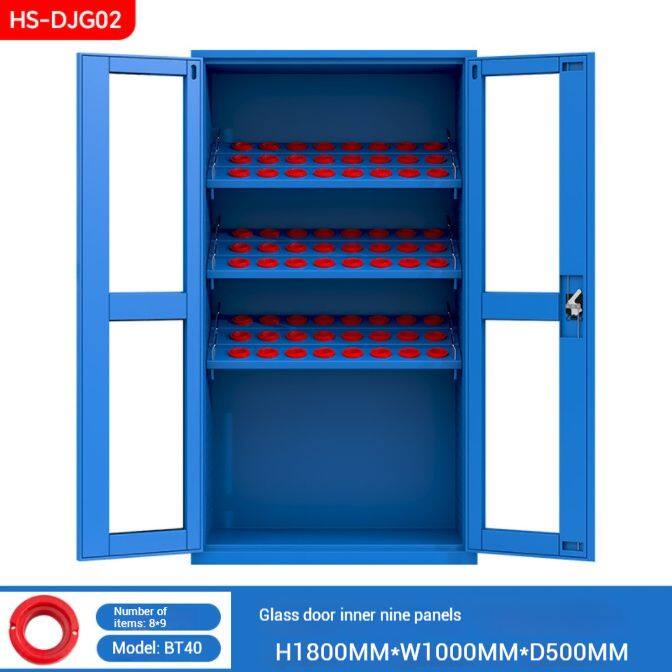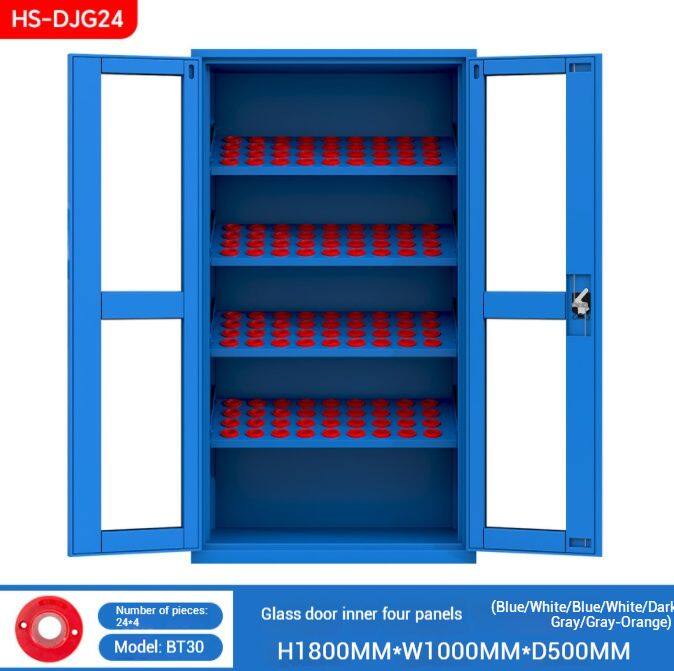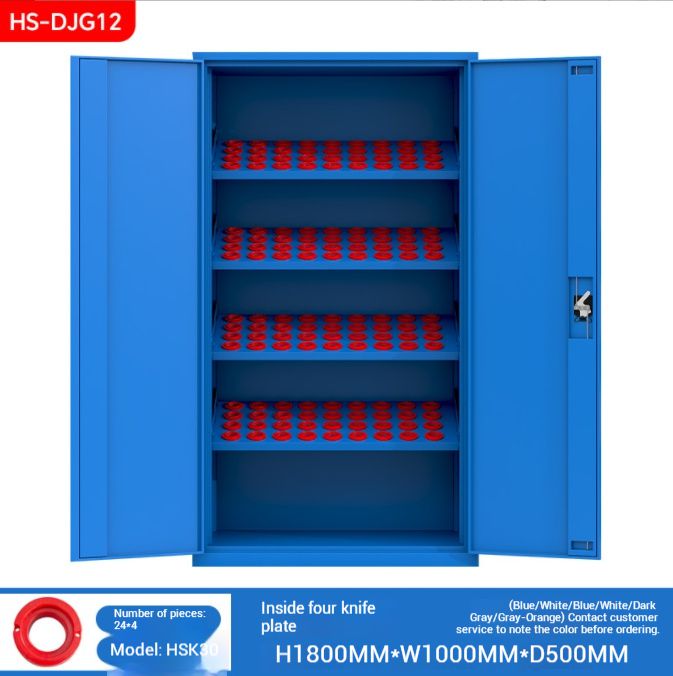-
 Sarah
Hi there! Welcome to my shop. Let me know if you have any questions.
Sarah
Hi there! Welcome to my shop. Let me know if you have any questions.
Your message has exceeded the limit.

Vocational School Essentials: Tool Cabinet Organization for Technical Training
2025-11-05 13:45:06
Vocational schools and technical training programs serve as critical pathways for developing skilled trades professionals, requiring well-equipped workshops and organized tool storage systems to support effective education. Tool cabinet organization plays a fundamental role in creating professional learning environments that prepare students for real-world workplace success. This comprehensive guide explores essential tool cabinet strategies for vocational training programs and their impact on educational outcomes.

The Educational Impact of Tool Organization
Proper tool organization in vocational settings directly influences learning outcomes and student development. Organized tool environments teach students professional workplace habits and standards they’ll carry into their careers. Studies indicate that students training in well-organized workshops demonstrate higher skill acquisition rates and better retention of proper tool handling techniques.
The educational benefits extend beyond technical skills to include professional behavior development. Students learn responsibility through tool accountability, organization through systematic storage procedures, and safety through proper tool handling protocols. These foundational skills contribute to comprehensive professional development and enhance employability upon graduation.
Supporting Diverse Vocational Programs
Vocational schools encompass various trade programs including automotive, welding, construction, electrical, and manufacturing technologies, each with unique tool requirements. Tool cabinet systems must accommodate this diversity through flexible configurations that support different program needs while maintaining consistent organization standards across the institution.
Some vocational schools implement standardized tool cabinet systems that can be customized for different trades while maintaining core organizational principles. This standardization supports consistent educational experiences and facilitates student transitions between different program areas. The ability to accommodate diverse programs while maintaining educational effectiveness represents a key consideration for vocational tool storage solutions.
Safety Considerations in Educational Settings
 Student safety represents paramount importance in vocational training environments where students learn to use potentially dangerous tools and equipment. Tool cabinets contribute to safety through secure storage that prevents unauthorized access and ensures proper tool handling procedures. Some educational cabinets feature safety locks that require instructor authorization for certain tool access.
Student safety represents paramount importance in vocational training environments where students learn to use potentially dangerous tools and equipment. Tool cabinets contribute to safety through secure storage that prevents unauthorized access and ensures proper tool handling procedures. Some educational cabinets feature safety locks that require instructor authorization for certain tool access.
Safety considerations extend to preventing accidents during tool access and storage. Rounded corners, stable bases, and appropriate weight distribution prevent tip-over accidents. Some vocational tool cabinets incorporate safety features like self-closing drawers or mechanisms that prevent overextension. These safety features create secure learning environments where students can focus on skill development.
Integration with Curriculum Development
Tool cabinet organization should align with curriculum development and learning objectives. Storage systems should support progressive skill development, with tools organized according to learning sequences and difficulty levels. Some vocational programs implement color-coded or numbered systems that correspond to curriculum modules or skill levels.
The integration benefits extend to supporting various teaching methodologies including project-based learning, competency-based education, and blended learning approaches. Organized tool storage enables smooth transitions between different learning activities and supports efficient classroom management. Some vocational schools use tool cabinet organization as teaching tools themselves, demonstrating professional workplace standards.
Accommodating Different Learning Styles
Students learn through various modalities including visual, kinesthetic, and auditory approaches. Tool cabinet organization can support different learning styles through visual organization systems, hands-on access patterns, and clear labeling. Visual learners benefit from color-coded systems and shadow boards that make tool identification intuitive.
Kinesthetic learners benefit from organized access patterns that support natural movement and tool handling techniques. Some vocational programs implement tool cabinet systems that facilitate different learning approaches while maintaining consistent organization standards. This adaptability enhances educational effectiveness and supports diverse student populations.
Supporting Class Management and Efficiency
Vocational instructors must manage multiple students simultaneously while maintaining safe, productive learning environments. Tool cabinet organization supports classroom management by reducing time spent on tool distribution and collection. Well-organized systems enable students to access needed tools independently, allowing instructors to focus on individualized instruction.

Efficiency benefits extend to supporting various class sizes and skill levels. Organized tool storage enables instructors to manage diverse student groups effectively while maintaining appropriate supervision. Some vocational schools implement tool cabinet systems that facilitate group work, individual projects, and demonstration activities within the same organizational framework.
Durability for Educational Environments
Educational tool cabinets must withstand constant use by students with varying skill levels and experience. Heavy-duty construction with reinforced frames and durable hardware ensures longevity despite frequent handling. Some educational cabinets feature additional reinforcement in high-wear areas to extend service life.
Durability considerations also include resistance to educational materials and cleaning procedures. Some vocational programs work with materials that can damage standard cabinet finishes. Educational-grade tool cabinets often feature specialized coatings that resist chemicals, paints, and other substances commonly used in vocational training. These durability features ensure long-term value and consistent performance.
Budget Considerations for Educational Institutions
Vocational schools operate under tight budget constraints that require careful consideration of equipment investments. Tool cabinets must deliver educational value while remaining cost-effective. Modular designs that can be reconfigured as program needs change protect initial investments and support long-term value.
Budget considerations extend to supporting various funding sources including grants, vocational funding, and community partnerships. Some tool cabinet manufacturers offer educational discounts or specialized programs that support vocational education funding. The ability to demonstrate educational impact and student outcomes helps justify investments in quality tool storage solutions.
Preparing Students for Workplace Success
Vocational education’s ultimate goal is preparing students for successful careers in their chosen trades. Tool cabinet organization plays a crucial role in this preparation by teaching professional workplace standards and habits. Students who learn proper tool organization and management are better prepared for employment expectations and workplace success.
The preparation benefits extend to developing professional attitudes and work ethics. Organized tool environments teach students to value equipment, maintain professional standards, and take pride in their work. These professional attributes contribute to employability and career advancement, enhancing the overall value of vocational education programs.

Tags: Vocational School Essentials, Tool Cabinet Organization, Technical Training

